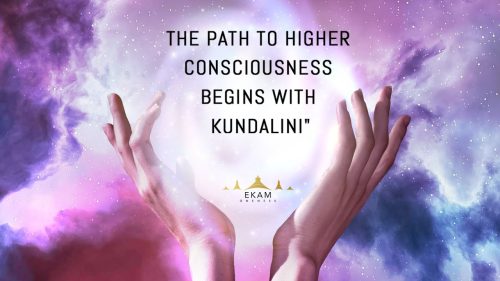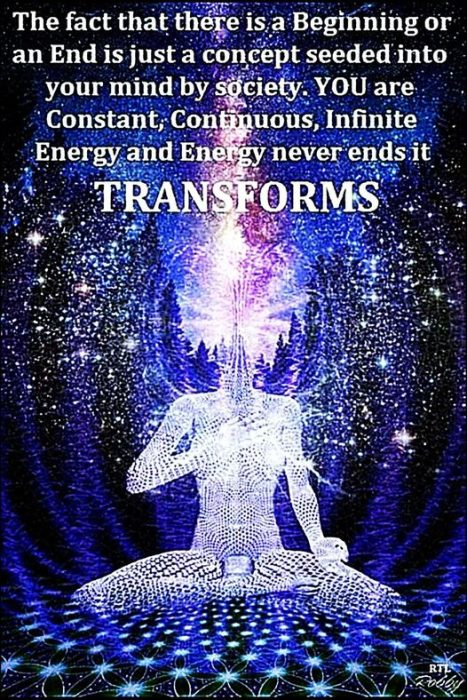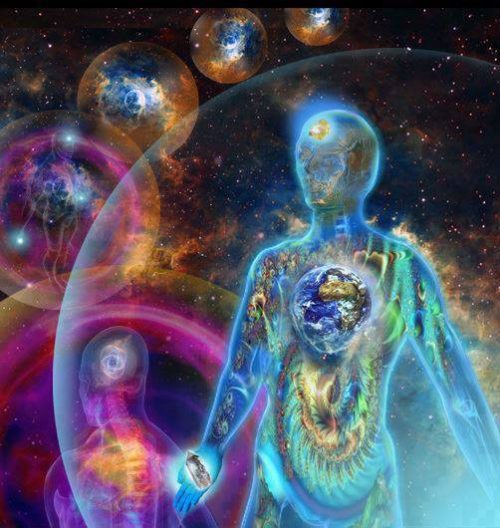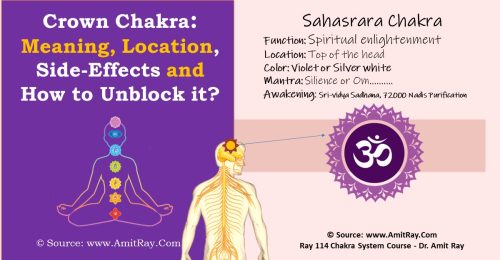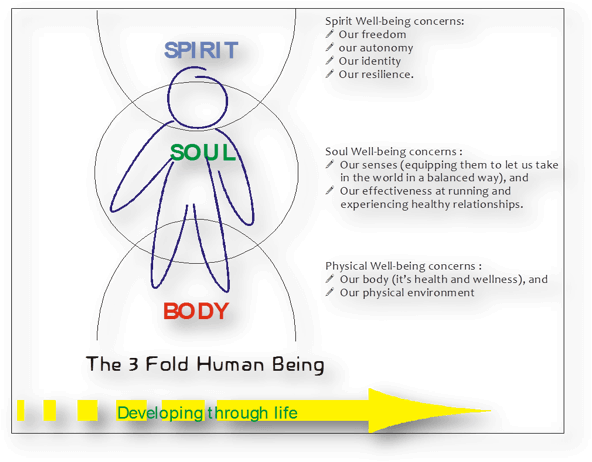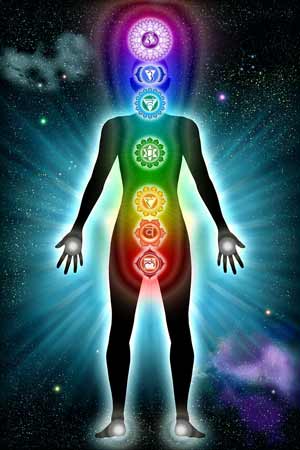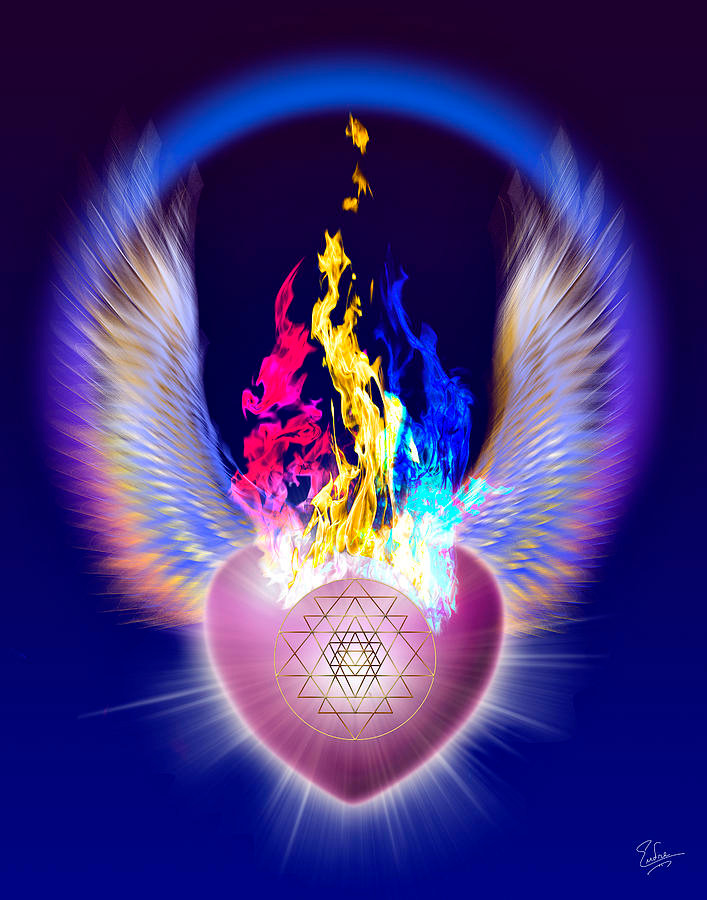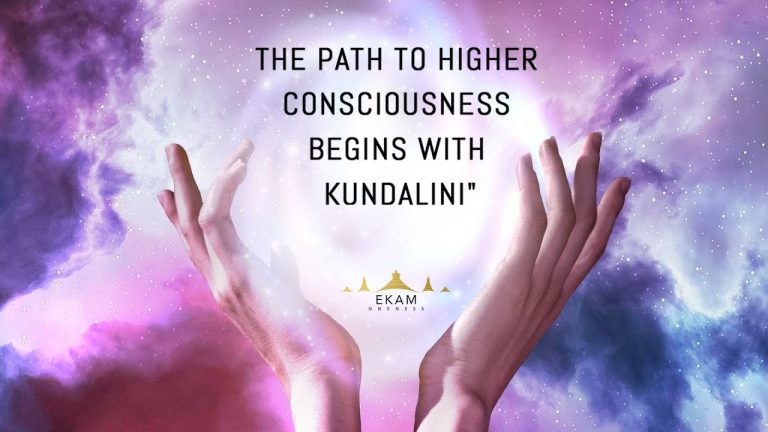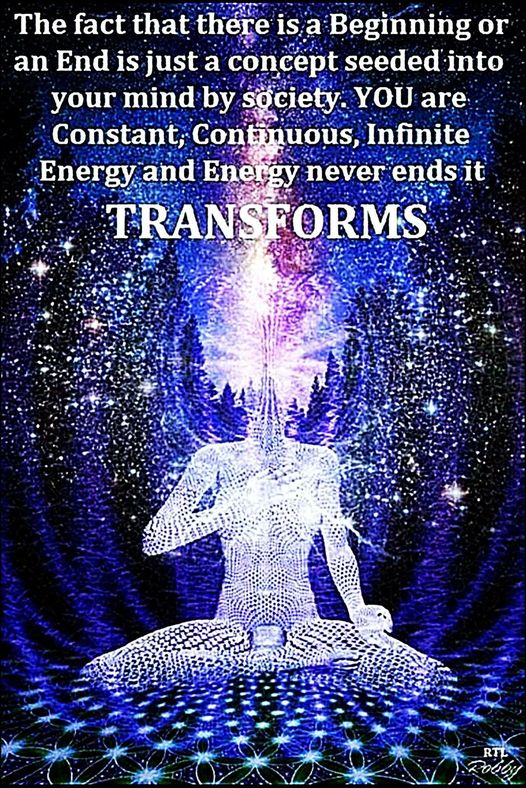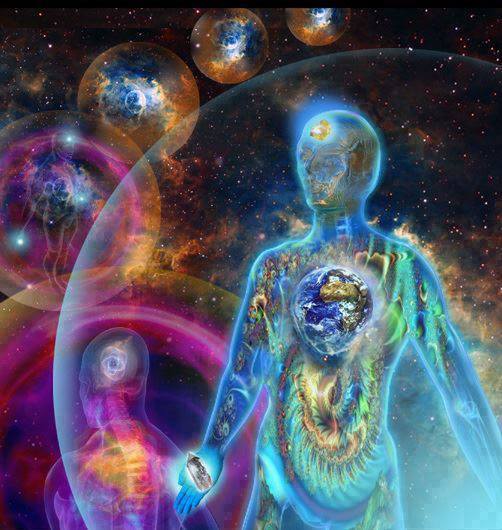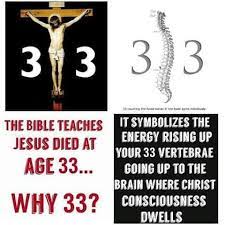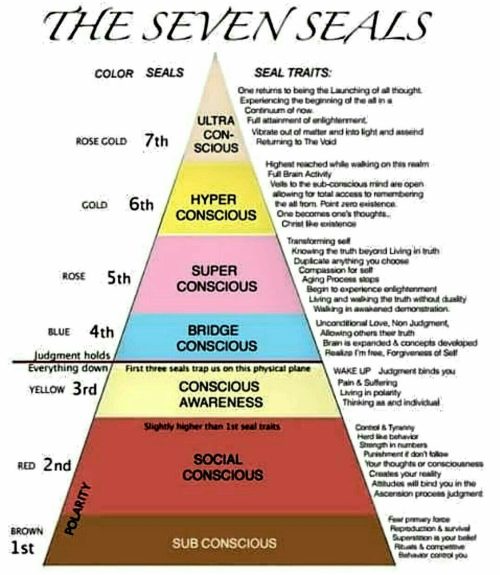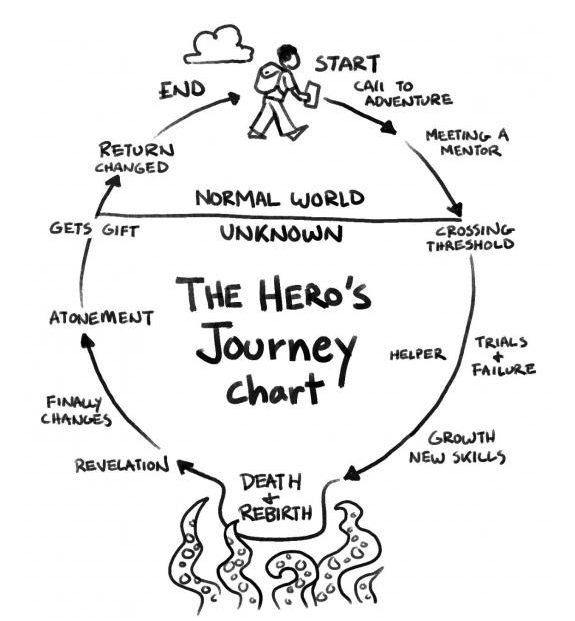
The psyche is huge, our total self. Transpersonal Psychology is attempting to bring back a respect for the wholeness of the Self. Its goal is to move forward along the trajectory of our unfolding lives, to help us manifest the theme “from fragmentation to wholeness” so that we can actualize our full potential. It is the first psychology (because it includes the work of Carl Jung) that explains the client’s process as being a hero’s or heroine’s journey, an inner awakening or pilgrimage back to our spiritual source. This journey has been known throughout history by many names: The Tao, The Way of the Christ, enlightenment, the shamanic journey, kundalini awakening, the middle path, the Royal Road, the path of Initiation, the hero’s journey, or simple ‘going home,’ to name only a few
The first pertinent question is likely to be how this alteration and development takes place in the face of the fact that for any such activity to be effective it must have existed as a continuous evolutionary process for ages for which the human body, particularly the skull, provides no convincing proof, having exhibited no marked variation for the last thousands of years conspicuous enough to furnish conclusive evidence for a radical change in the brain, the seat of its mental expression.
If the answer to it be that the alteration does not occur in the size or shape of the brain or any other vital organ or in the body as a whole, but in the arrangement, quality, and composition of the constituents of the body in respect of the extremely subtle life element present in every cell and part of the organism, the point raised in the question would cease to have any weight.
The obvious reluctance of many otherwise highly intelligent minds to accord recognition to the validity of spiritual experience and the reality of psychical phenomena is due mainly to the inability of empirical science to grasp or analyze the true nature of the life principle animating the cell, the ultimate unit of all organic structures.
At the present stage of our knowledge the rousing of Kundalini provides the only possible way to study the extraordinary behavior and possibilities of the life element and the subtle biochemical medium by means of which it manipulates the organism and is able to augment or reduce its efficacy and power, leading to the bewildering diversity in intellectual acumen and spiritual insight of persons possessing approximately the same dimensions of the head and the same size and weight of the brain.
It is a great mistake to treat man as a completely finished and hermetically sealed product, entirely debarred from passing beyond the limits imposed by his mental constitution. There is a big gap between him and the most intelligent anthropoid apes, whose habits, it is said, he shared only a few thousand centuries ago, advancing in an inexplicable way beyond the mental boundary reached by the other members of that family. The cause of departure must have originated within, as external influences have no radically modifying effect on a mental compartment sealed by nature.
According to the popular beliefs in India, Kundalini is possessed of marvelous attributes. She is Pam Shakti, the supreme energy, which, as illusive Maya, inveigles the embodied Jeeva into the mesh of transitory appearances, bound helplessly to the ever-rotating wheel of life and death.
She is the seductive female who lures him to the bed of enjoyment followed by procreation and pain, and she is also the compassionate mother who creates in him the thirst for knowledge and the desire for supersensible experience and endows him finally with spiritual insight to lead him towards the realization of his own celestial nature.
Amazing stories are current about the manner in which some very famous literary stars of India whose names are household words, became the fortunate recipients of her grace and from common men soared to unrivalled heights of poetic and literary genius almost overnight. They emerged as accomplished poets, rhetoricians dramatists and philosophers without the aid of teachers, without training, and sometimes without even the rudiments of education.
There are also incredibly strange anecdotes of the marvelous psychic gifts showered by her on many exceptionally favored devotees almost on her very first appearance before them in a vision, investing the hitherto unknown aspirants with such miraculous powers as enabled them apparently to defy at will some of the otherwise inviolable laws of nature.
Kundalini is the mechanism as well as the motive force by which this biological trimming and re-modelling is accomplished in the most effective manner, provided the system is not too much deteriorated either by its own defective mode of life or because of a retrogressive heredity. The awakening being a rare but natural biological phenomenon it is futile to enter into a discussion of the reality of the lotuses, on which a good deal of emphasis has been laid by the ancient authorities.
The idea of Chakras and lotuses must have been suggested to the mind of the ancient teachers by the singular resemblance which, in the awakened state, the lustrous nerve centres bear to a luminous revolving disc, studded with lights, or to a lotus flower in full bloom glistening in the rays of the sun.
The circle of glowing radiance round the head, tinged at times with rainbow colors and supported by the thin streak of light moving upward through the spinal duct, bears an unmistakable likeness to a blooming lotus with its thin stalk trailing downwards in water, conveying to it the nutritive elements drawn by means of innumerable root fibres, exactly in the same manner as the living stalk of Sushumna supplies the subtle organic essence drawn from every part of the corporeal frame by means of countless nerve filaments to feed the Flame lit by Kundalini.
It resembles in effect a gorgeous lotus of extraordinary brilliance, having a thousand petals to denote its large dimensions. In the absence of adequate physiological information, the old savants probably could not seize hold of a better method, not only to indicate the position of the nerve clusters which had to become seats of intense activity simultaneously with the awakening, but also to prepare the uninitiated disciples for their subsequent brightly illumined lotus-like appearance.
As one becomes conscious and experiences an uncovering of meaning, the pieces of the puzzle come together. Physical illness as a result of the healing and transformation process is viewed as “part of the process,” a detoxification of emotional pain, a cleansing of the energetic blockages in each chakra or energy center in the body. Imagination is a process of reversing conditioned responses so to eliminate feat These processes affect the body, for a full healing of body, mind and spirit.
Psychospiritual Integration and Transpersonal Psychology
The Imagination model is a transpersonal psychological model integrating one’s psyche with the spiritual nature of Self. With healing, transformation, health and consciousness, one is merging the psyche and the spirit—hence the term, psychospiritual integration. According to one of my greatest teachers, Jacquelyn Small, psyche is the root of the word “psychology,” and it means soul, or spirit, something psychologists seem to forget.
This journey has been known throughout history by many names: The Tao, The Way of the Christ, enlightenment, the shamanic journey, kundalini awakening, the middle path, the Royal Road, the path of Initiation, the hero’s journey, or simple ‘going home,’ to name only a few (Small, 1991, p. 30). The Imagination process is the hero journey, described so profoundly by Joseph Campbell—”the goal of the hero trip down to the jewel point is to find those levels in the psyche that open, open, open, and finally open to the mystery of the Self being Buddha consciousness or the Christ”.
Quantum Physics and Universal Law
In addition to core concepts mentioned above, imagination aligns closely with theory from quantum physics which states that we are energy and information, and that energy and information can be focused through our intentional thought to create the future.
With awareness of these principles of healing, clients are ready to heal and trans-form through psychospiritual group process and transpersonal psychotherapy, merging their psyches with the spiritual aspect of Self. The hero’s journey can take each participant to that point where the whole self-awakens. Once awakened, nothing is impossible! Imagination participants learn the art of co-creation through the teachings from quantum physics and begin to affirm energetic intentions that not only affect their mind/body but, the cosmos as well creating interconnectedness which is desired.
The Stages of Contemporary Mystics
Claiming that there is “the universal formula” in cultures around the globe, Joseph Campbell, an expert on myths around the world, describes the three stages of the mythological hero’s journey as “
(1) separation,
(2) initiation, and
(3) return:
Campbell’s brief summary of this pattern says, “a hero ventures forth from the world of common day into a region of supernatural wonder; fabulous forces are there encountered and a decisive victory is won; the hero comes back from this mysterious adventure with the power to bestow boons on his fellow men:’ In Campbell’s blueprint, first, heroes separate from their familiar life; second, they are initiated by facing challenges’, ordeals, and struggles; third, their return home is “a rebirth to a new world:’ where they are “the reflex of a larger self.” Thus, “the ultimate aim of the quest … must be neither release nor ecstasy for oneself, but wisdom and power to serve others.’
THE PATHLESS PATH
The Romance of the Path If one is fortunate, at a certain point in the dream there are the stirrings of awakening to reality. The forgetting begins to become remembering, and the game of hiding from Self shifts to seeking. Of course, the yearning for the peace, happiness and freedom of our original nature has been going on unconsciously beneath the surface of the “I” all along. But the submerged drive to self-realization is not satisfied as long as it is focused outward on the world and the passing experiences of the supposed individual.
We may become conscious of that drive for what it is. Perhaps the suffering has become too great. Perhaps you have gratified your worldly desires and found that the promises of materialistic culture were false, that you are still lacking real satisfaction. Perhaps you begin to realize that there is more to life than you thought, that you have intimations of a deeper reality. Or a teacher or lover or new circumstance gives you a sudden insight, a taste of the bliss or peace of who you really are. You sense that there is something more and must get to it. Grace is a word we give to the ineffable force pulling oneself home.
It is the inherent magnetic attraction, like gravity, recalling the individual mind-stream to the ocean of consciousness. This force is literally the intuition of our original being, our remembering, through the fog of identification with the individual personality. We intuit this pull in nature. It arises in the intimacy of romantic love, and when we lose ourselves in our creative passions. It flashes momentarily in the psychedelic experience. It speaks to us clearly from the enlightened ones of all ages and cultures whose wisdom stirs and awakens us. Whatever the external catalyst, they are the ways consciousness calls attention back to itself and launches the “I” toward “transformation,” or “self-realization” or “enlightenment.”
Within the dream the spiritual path arises as the way out of suffering and toward freedom. This is the crucial turning point in spiritual life, when you become aware of that pull, when you feel the opening of the heart or the stirrings of a vaguely familiar knowing. If you are willing to follow and give it your full attention, the individual consciousness may fix itself into a homing orbit, impelled by desire and drawn by grace. And if you are so blessed, you may see that the push and pull are one and the same force, and in that realization individual effort dissolves into the effortless flow of the totality.
So we get “on the path.” It is thrilling, comforting, exhilarating. You are on the heroic journey home. You have sighted the goal and are moving toward it. It is a righteous feeling. The “I” is now a seeker, a spiritual person. We are no longer wandering around lost in the wilderness. We begin to live on purpose with intention and direction. We clarify and simplify our lives. We discover the rich, fascinating treasure house of world philosophies, spiritual traditions, methods and practices that promise us clarity, bliss, freedom. We are turned on by teachers, preachers and sages, led and misled by charlatans and fools. You study, you learn the practices and techniques, become fluent in the languages of spirit, acquire the ritual paraphernalia, the clothes and emblems of the ever burgeoning tribe of seekers.
You meditate, pray, breathe, practice yoga, raise the kundalini, balance the energy, heal, dance, drum, study your chart and cast the hexagram, stare deeply into each other’s eyes. And indeed it does bring comforts, glimpses of illumination, tastes of peace and happiness. Inspired by these successes we push on, dogged, steady, believing in progress; or, lacking such signposts along the way we may flail in despair, sensing it is endless or fruitless, or just not for me.
The radical nondual vision sees that all this striving and seeking is still more identification, albeit in a spiritual mode. The “I” has now taken on the identity of a spiritual seeker. “I” am purifying myself, “I” am making myself better, “I” am getting closer to God. The concept of a spiritual path itself is a more subtle instrument in maya’s bag of tricks to project duration so that the separate self-sense can sustain its illusory existence. It buys it even more time and allows it to remain in business.
As long as there is a path, the “I” can continue to delude itself that it exists as something separate from source, at the same time reassuring itself that it is getting “closer.” The struggle along the path, the heroic journey crossing the vast distance to reach some goal, reinforces the experience of solidity.
Sooner or later—if you are fortunate—you realize that the very concept of “someone on a path” itself is the impediment. Perhaps you have the grace of meeting a true gum who reflects your immaculate reality back to you. You see that you are holding to the belief that there is an “1” that is separate from the Self, and that by practice it can somehow diminish or purify itself. You see that “diminishing” or “purifying” is simply more striving.
There is nothing to diminish or purify. The concept that “I am not already That” is pure ignorance. It imagines the condition we call “unenlightenment” and posits a goal called “enlightenment.”
It then creates a spiritual path that will take this “unenlightened” me from my imagined “bondage” to some imagined “free-dom.” Yet the non-existent “I” can never bring about its own demise. The ultimate freedom comes in seeing that there really is no separate “I,” that there is no path and no need for anyone to walk it, that there is no bondage to escape nor freedom to attain. No Way Here we come face to face with the fundamental paradox of the nondual realization.
The big joke is that you already are what you seek. You already are peace, you already are happiness, you are the love, the knowing, the consciousness that pervades everything and that manifests as the universe. You are That. The absolute is all there is. Since you already are what you seek, there is no way to get here. There is nothing to do—no effort or practice is necessary—to become what you already are. All you can do is be. This is the true art of being. In the pathless path, the means and the end are one and the same.
Only awake to the One Mind, and there is nothing whatsoever to be attained. This is the real Buddha. The Buddha and all sentient beings are the One Mind and nothing else.” And finally Huang Po shows them the truth of Buddhism that is beyond even Buddha: “So the sutra says, ‘What is called supreme perfect wisdom implies that there is really nothing whatsoever to be attained.’ If you are also able to understand this, you will realize that the Way of the Buddhas and the Way of devils are equally wide of the mark.” There is no way to what already is.
Understanding It All
The pathless path of Advaita (literally, “not-two” or “undivided” in Sanskrit) is the way of understanding—also called jnana in India—the penetrating wisdom that sees no separation. The nondual knowledge is the Self. While this wisdom cannot be grasped in concept, we can directly taste our true nature by understanding what the word “understand” really means.
If we examine the driving force behind analysis itself we discover the why-thought. “Why?” is the questioning quality of mind. Like an itch the “why?” arises and calls to be scratched—to be pondered, to be answered, based on the assumption and hope that if this “why?” is answered, everything will fall into place and the itch will go away.
Questioning is an intellectual form of desire, a seeking of the understanding that the mind thinks will bring peace, security and control. Like the process of desire, which is never quite satisfied by its temporary gratifications, intellectual answers come and go, yet the mechanism of questioning continues seeking ever new content.
The question—this wanting to know—is a crucial piece of technology in the self-perpetuation of mind, one of the ways it sustains its functioning and reinforces the appearance of the “I”. The why-thought is a servant of the I-thought. Deathly afraid of unemployment, it ongoingly seeks busy work to stay in action and sustain its imagined existence. It ennobles understanding as its heroic adventure of explaining reality and coming to ultimate truth. Yet this hope is the sucker bait on the fishhook of the question. If you turn the question mark—”?”—upside down—”t”—it looks like a hook.
Questions have a barb on the end that hooks attention into continued thought activity, which in its pursuit of truth continues to mask it. It generates ever-more refined questions and answers and the whole body of profound philosophical and spiritual discourse arises. It seems like such a heresy to the acquisitive, knowledge-seeking mind to suggest that there is really nothing to know and no point in thinking about it.
No matter how sublime the expression, all explanation is just a metaphor for the unutterable mystery. In the silent knowing beyond words, mystery is sufficient unto itself and needs no explanation. Ultimately, “why?” has no answer. Or, we could say, the real answer to “why?” is “because.” That is, “because” in the sense of an injunction to be-the-cause itself, to abide as source. When you realize that you are the cause of all, the source of all questions and answers, then the true meaning of understanding becomes clear.
Reverse the two concepts within understand and you get stand under. To stand under something might be to place yourself below it or lower than it, which suggests that one approaches mystery by humbling yourself before it, bowing to it.
Thought must give up all attempts to define the infinite and comprehend the unknowable. It must kneel, indeed, prostrate itself fully upon the ground of silence and release all its conceptual positions, no matter how lofty. In the surrender to no-thought, the real knowing is revealed.
Wisdom arises in the total acceptance of mystery. The meaning of understand gets even clearer if we see the word’s Latin origins: sub (under) stance (stand). The sub-stance or essence of something is that which stands under it, that is, it underlies it. To understand reality is to realize that it stands under everything and everyone. It is the unchanging substrate within everything, the Self within everybody. You are that truth.
Thus, understanding means being the substance that stands under everything. In this sense truth understands it all. In this mysterious self-knowledge where knowing is being, there is no individual knowing subject and known object. “Substance is what remains, “when everything you can think of has gone.”
